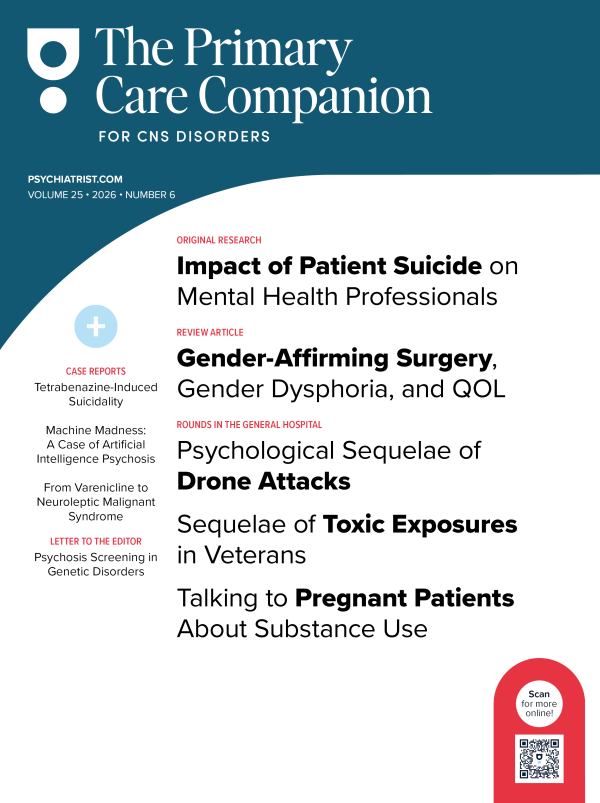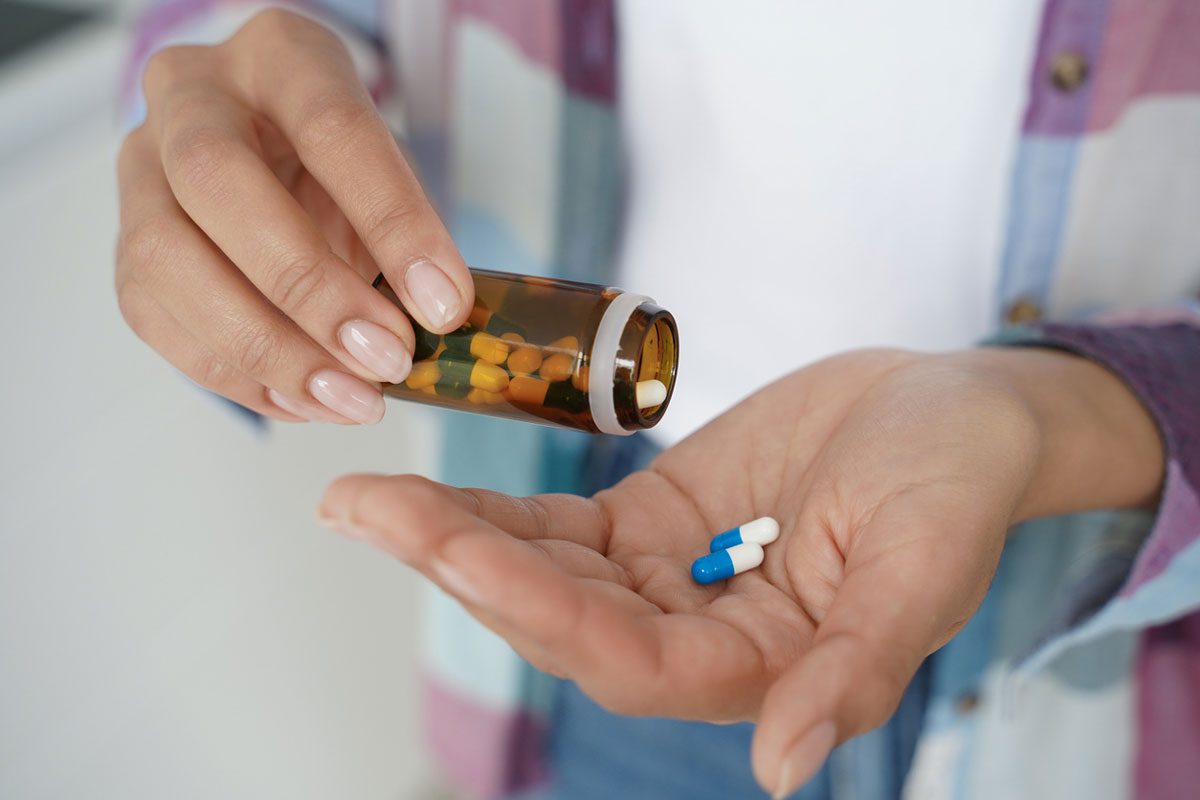Vaptans for Hyponatremia Induced by Psychogenic Polydipsia
To the Editor: Vaptans are a new class of pharmaceuticals available for the management of hyponatremia. Electrolyte imbalances with hyponatremia are potential sequelae of psychogenic polydipsia that occur in 6% to 20% of psychiatric patients.1 In polydipsia cases, abnormal vasopressin secretion and action can impair water excretion.2 Aquaresis without electrolyte loss is the primary indication for prescribing a vaptan.
Conventional therapies for hyponatremia. Mild hyponatremia is documented by sodium concentrations between 128-134 mEq/L, and severe hyponatremia begins at levels under 120 mEq/L.3 Rapidly falling serum levels of sodium below 125 mEq/L may present with dizziness, confusion, convulsions, and coma4; gradual onset, chronic hyponatremia is usually less symptomatic. Fluid restriction is the established method of treating hyponatremia in psychogenic polydipsia.4 Correction should never exceed sodium concentration escalations of greater than 12 mEq/L in 24 hours. Too fast repletion can precipitate the development of central pontine myelinolysis,4 a dangerous and sometimes fatal demyelinating process. Thus, close monitoring is important.1 Saline infusion with electrolyte correction may be considered only in severely ill individuals. Demeclocycline is one of several pharmacotherapies for hyponatremia.1,4
Vaptans. Vaptans are drugs available as an option to treat polydipsia-induced cases of hyponatremia.3 Conivaptan and tolvaptan are approved for use currently; also under consideration are lixivaptan, mozavaptan, satavaptan, and a research agent, RWJ-351647. Vaptans can be utilized orally, but conivaptan can also be administered intravenously. These medications act by antagonizing vasopressin 1A and 2 receptors, thus blocking the action of the antidiuretic hormone on the proximal tubules and leading to the loss of free water. Conivaptan and tolvaptan are indicated for monitored cases of euvolemic and hypervolemic hyponatremia. Tolvaptan raises serum sodium levels without fluid restriction5 or induction of hypernatremia.4
Adverse effects/drug interactions with vaptans. Thirst is the most common side effect associated with vaptans.4 Asthenia, polyuria, and constipation are also reported. Intravenous conivaptan may cause skin inflammation at an infusion site. Tolvaptan is not recommended for use in patients with hepatic dysfunction since it may result in gastrointestinal bleeding. Avoiding concomitant fluid restriction mitigates the risk of sodium levels’ rising too quickly. Brain demyelination is a theoretical possibility, but has not been reported with vaptan administration.
Vaptans are metabolized by and inhibit cytochrome P450 3A4 enzymes.4 Therefore, these agents should not be coadministered with drugs metabolized in the same manner, such as ritonavir, clarithromycin, and ketoconazole.
Vaptan pharmacotherapy. Psychogenic polydipsias that induce dangerous degrees of hyponatremia require prompt treatment. A vaptan should be selected when aquaresis without electrolyte loss is urgently indicated to treat clinically compromising hyponatremia. Vaptan effects start quickly and persist for 24 to 48 hours.4 Vaptan administration always requires close clinical and laboratory monitoring. Although conventional therapies are the current standard of care, vaptans are available when clinical concerns are more urgent.
References
1. Dundas B, Harris M, Narasimhan M. Psychogenic polydipsia review: etiology, differential, and treatment. Curr Psychiatry Rep. 2007;9(3):236-241. doi:10.1007/s11920-007-0025-7 PubMed
2. Goldman MB, Luchins DJ, Robertson GL. Mechanisms of altered water metabolism in psychotic patients with polydipsia and hyponatremia. N Engl J Med. 1988;318(7):397-403. doi:10.1056/NEJM198802183180702 PubMed
3. Gross PA, Wagner A, Decaux G. Vaptans are not the mainstay of treatment in hyponatremia: perhaps not yet. Kidney Int. 2011;80(6):594-600. doi:10.1038/ki.2011.78 PubMed
4. Robertson GL. Vaptans for the treatment of hyponatremia. Nat Rev Endocrinol. 2011;7(3):151-161. doi:10.1038/nrendo.2010.229 PubMed
5. Josiassen RC, Goldman M, Jessani M, et al. Double-blind, placebo-controlled, multicenter trial of a vasopressin V2-receptor antagonist in patients with schizophrenia and hyponatremia. Biol Psychiatry. 2008;64(12):1097-1100. doi:10.1016/j.biopsych.2008.06.017 PubMed
Author affiliations: Department of Psychiatry and Behavioral Sciences, University of Louisville School of Medicine, Louisville, Kentucky.
Potential conflicts of interest: The authors report no proprietary or commercial interest in any product mentioned or concept discussed in this article. The authors have no conflict of interest related to the development and writing of this report.
Funding/support: The authors received no funding related to the development and writing of this report.
Published online: January 31, 2013.
Prim Care Companion CNS Disord 2013;15(1):doi:10.4088/PCC.12l01444
© Copyright 2013 Physicians Postgraduate Press, Inc.





